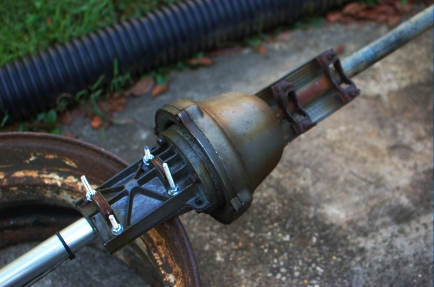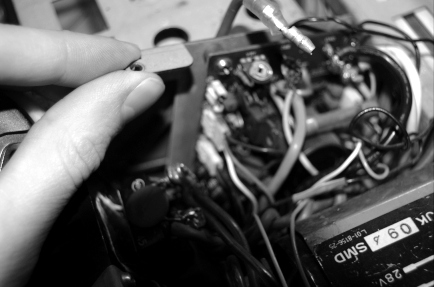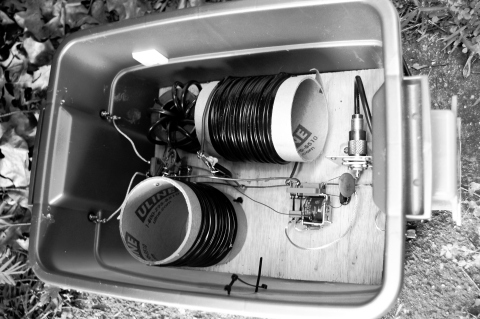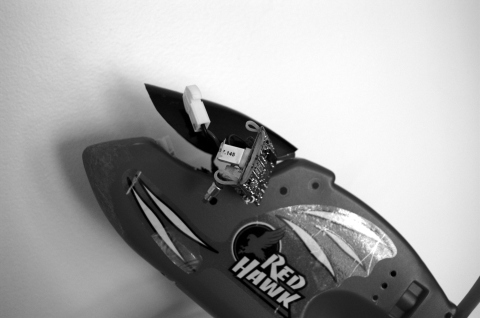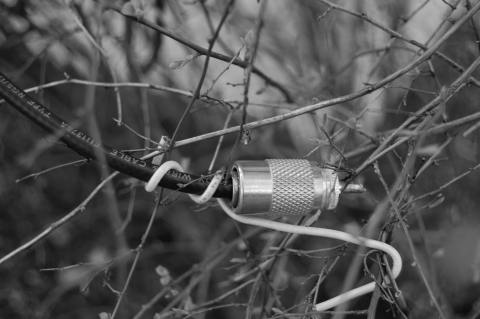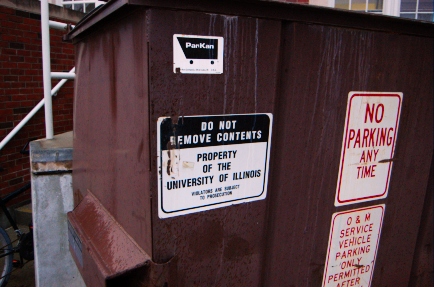
Dumpster
With transition imminent in our lives, I have begun packing up some of my things that I don’t use much right now. It’ll save some time and headaches when we finally figure out where we’re going and begin the moving process. Coincidentally, my good friend Matt recently moved cross-country and elected to dispatch the majority of his tinkering resources via Craigslist. You see, Matt and I share a common vice: we are master dumpster divers.
I was reminded of this reality as I have been trying to center myself with respect to what’s important in life last week week. I have a lot of stuff, frankly, an embarassing amount of stuff. And, although I use a surprising amount of it, I really don’t need it. But, this post is about collecting the stuff, not getting rid of it. I’ll save that for a later post.
As I began sifting through some of the goodies tonight, a confluence of thoughts began to swirl in my head. I’ve had resumes and vitae on my mind for quite a few months now since I’ve been looking for employment (if you hire engineers or scientists, particularly for RF/signal processing/remote sensing/upper atmospheric/space research and development, I’m your man). And, I was poking through the rubble of my home “office,” which is actually my office, hamshack, and workshop, plus Sarah’s desk and books and the place that Sarah and I cram stuff into when company comes. Suddenly, it hit me: my entire resume can be read through my collection of odds and ends.
Dumpster diving, to borrow the analogy from Nelson Muntz, is like “kicking butt” in the sense that it might not involve any kicking at all. Likewise, you have to get to the stuff before it gets to the dumpster. This is the first rule of dumpster diving: Know who to ask, how to ask, and when to ask. The second rule is don’t get greedy. I learned both of these rules at a tender young age.
You see, the house I lived in between the ages of three and nine was next to the Village of Millersburg’s street department garage. Of course, this was a great boon for a child of my age to see all of the equipment and workers coming and going. Mom and Dad may remember this story differently; but, this is my recollection.
Although I was fascinated by all aspects of construction work, the one thing that I obsessed over more than anything else was signage. Some kids are experts on dinosaurs, I was fascinated by road signs. I coveted the road sign poster on the wall at the BMV. Mom had inquired about obtaining one for me to no avail. The other thing I coveted was a road sign or two of my own. A friend had a stop sign in his room; but, I was looking for something more exotic, maybe a yield sign. My poor mother worked some connection she had at the Street Department to get a discarded sign. She told me that we could go down to the sign depot and pick one out in the morning, which was probably a mistake.
I rose particularly early the next morning and, after locating the sign depot, collected a few signs for myself. When you’re a kid, street signs don’t look big and heavy on their posts. But, when you get up close, they rival your personal geometry. So, I left a trail of signs I couldn’t carry back up to the house. I don’t remember the details of what happened next, other than that we had to return all of the signs and get “approved” ones. I hope somebody thought it was funny; goodness knows I learned a lesson that day about the difference between dumpster diving and theft of city property.
A few years later, Mom had an antique dealer come through the barn behind the house and the signs caught his eye. She let him have them for a song. I was incensed at the time, although in retrospect, it was probably better to not profit too much on them.
The basement of the Inventor’s Hall of Fame once hosted an area where kids could dismantle old hardware. We were fortunate to visit when some racks of AT&T Long Lines hardware had been recently donated. I think I carried a half-dozen plastic sacks of relays, waveguide, transistors, meters, and other assemblies out of there that day. Although I have sifted through most of that by now, the juiciest pieces still remain in my inventory, ready for use. I still don’t think that the docents knew what hit them when the budding master dumpster diver rolled in.
Although I dabbled off and on in the barter of used electronics and such in high school, the dumpster diving began in earnest again in college, where I met guys who weren’t afraid to actually climb into real dumpsters to fish things out. Those were good times. Most of the stuff we pulled out of the dumpsters was building materials, which we used to spruce up our living spaces. Blocks from a demolished (the Young Building of Philosophy and Relgion, a grievous sin against architecture and HVAC) academic building allowed us to put an “upper deck” couch behind the regular couch in our apartment for stadium seating. This was great for watching movies, or at least watching my roommates play Mario Kart 64 with their pharmacy notes on their laps…right.
One of the other great successes was DuddiNet and the Tower of Power. I dragged an 8-foot relay rack (rescued from the scrap heap at a summer job) into my dorm room and filled it full of computers and networking equipment. I asked the university IT people if they had any leftover rolls of CAT5 cable and they gave me as much as I wanted. We pulled our own network in the dorm. At that time, the dorms were 10baseT with hubs. So, it was a real bottleneck if you wanted to move some data (use your imagination here) around. We put in a private switched 100baseT network that connected four rooms on two floors.
In more recent years, I’ve scored some terrific stuff just by paying attention when spaces are being cleaned-up. For instance, that’s how I got my HP vector voltmeter and my oscilloscope. And, indirectly, through Dad, it’s how I got some more Greenlee punches and a set of metal-marking stamps. Anyhow, in order to protect “sources and methods,” I’ll decline from disclosing too many details about my more recent activities…I haven’t swiped anything from a forbidden dumpster, though. Promise.
» Read more: Resume of a Master Dumpster Diver: the Early Years
